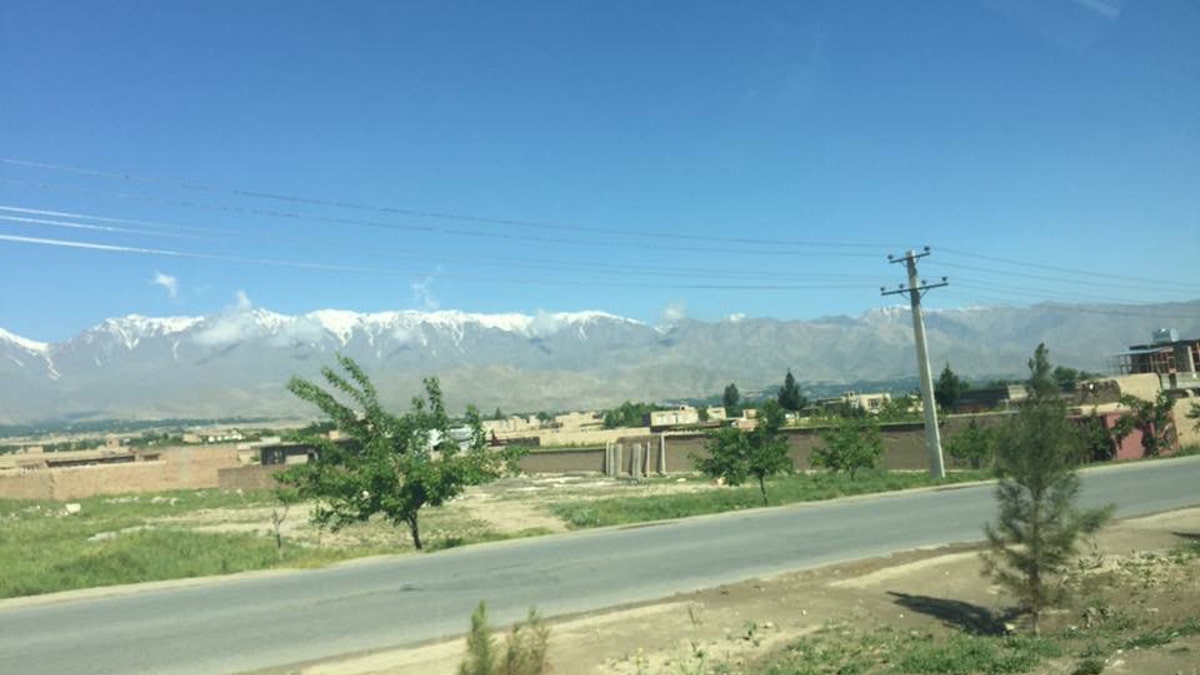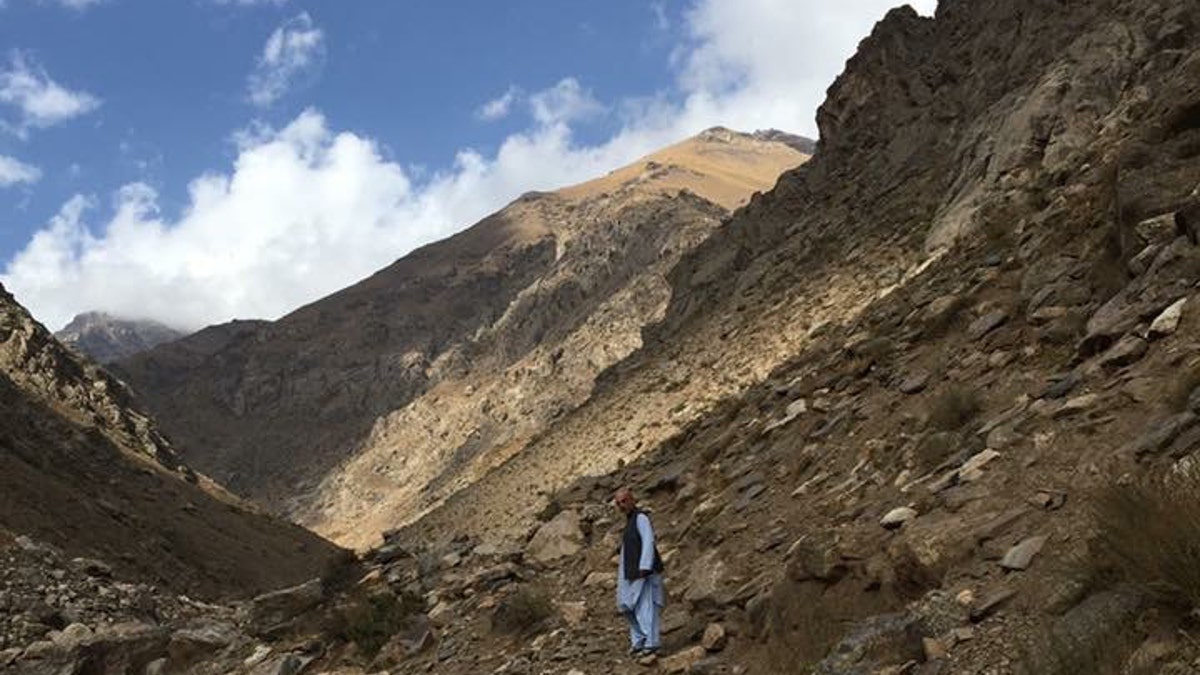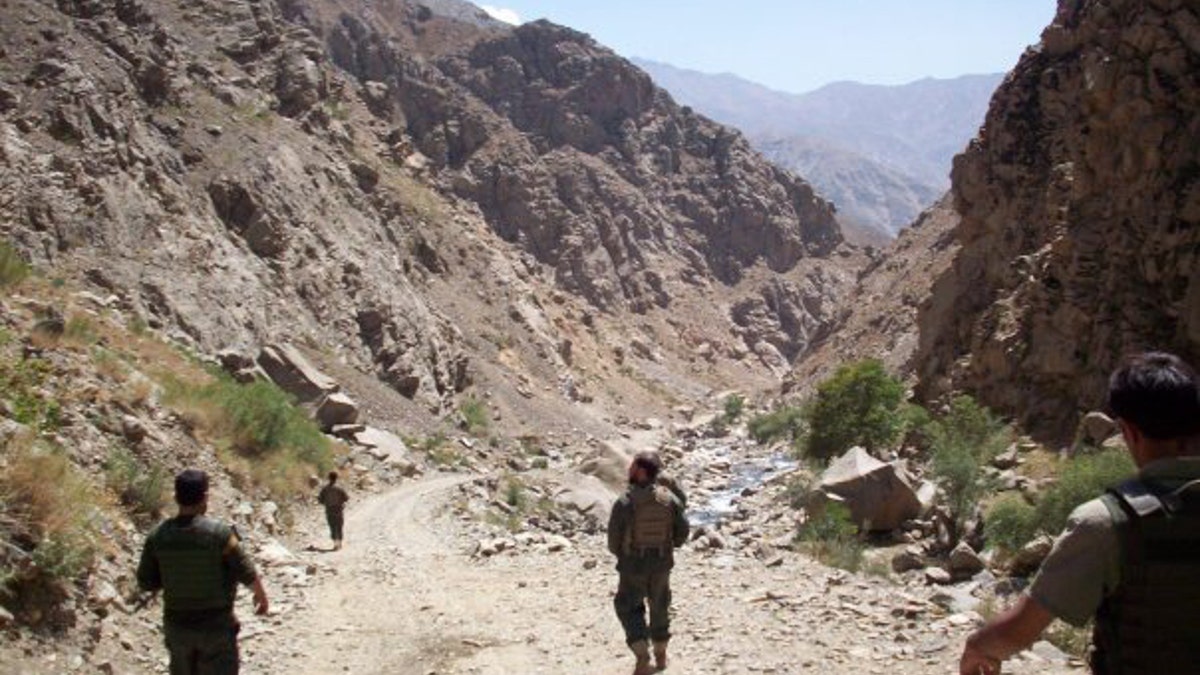What's next for US in Afghanistan after MOAB strike?
Lt. Col. Michael Waltz offers insight on broader strategy
KABUL, Afghanistan – Earlier this week, some 700 young men here were spotted traveling north in a convoy of buses. They had no identification cards and said they were laborers going to find work, Gen. Jawid Kohistani, a former official at Afghanistan's National Directorate of Security (NDS) and a leading security analyst, told Fox News.
Despite that lack of documentation, they were able to make the more than 300-mile excursion from terrorist-teeming Nangarhar province by the Pakistan border to the provincial capital of Jalalabad. Then, they made their way west to Kabul and, finally, north to Mazar e-Sharif -- with almost no authorities stopping or investigating them.
"How does terrorism spread? Terrorists just get on a bus and go where they need to. It is that easy," Kohistani said. "These are the simple things that must be fixed. These young men have no weapons on them. So security forces say they cannot stop them. There is no real strategy to identify them and arrest or get rid of them."
When it comes to terrorists either entering Afghanistan – often across the Pakistan border -- or moving from province to province, such travel is often far from clandestine. While some such travel entails traversing mountainous pathways at night, it’s usually done by large groups of men in broad daylight on mainstream highways.
Also this week, a high-ranking official in Afghanistan told Fox News about a different group comprised of four buses – again filled with fighting-age men claiming to be farmers but without identification or weapons -- moving from the south to the north along the highways.

"No one knows who they are and nobody here seems to be stopping them to find out," the source said.
It’s unclear whether the two groups had any ill intent. But military experts say that once terrorists do arrive at their destinations, Taliban and other terror groups retrieve weapons from local supporters or disgruntled government soldiers they have paid off.
Afghan people often talk among themselves about the routes these large groups of young men take. Many speak of the road between Nimruz to Helmand, with at least 30 highways of open desert on the 120-mile stretch, as having little to no checkpoints or border patrols.
"It's so far from Kabul," Kohistani observed. "It is forgotten by the central government. We have the same problem at the Rabat border."
Then, there is the 60-mile winding passage between Chitral, Pakistan, and Nuristan, Afghanistan, considered to be a key artery into Afghanistan for terrorists. Insurgents appear to move along this route freely.
Intelligence and tracking systems, according to multiple Afghanistan-based analysts, are inefficient when it comes to squashing terrorist movement – despite an estimated $2 trillion of U.S. taxpayer money pouring into the country since 2001 to defeat terrorism and stabilize the war-torn nation.

"For some time, the NDS has lacked strategic leadership and direction. This often results in a lack of timely intelligence," Afghan journalist Bilal Sarwary said. "While it is still seen as a potent force, the Taliban have also managed to expand their area of recruitment. Gains by the Taliban and a lack of strategic direction need to be reversed."
Concerned and frustrated locals have now taken to social media to publish the plate number of buses they spot carrying questionable fighting-aged men – with the hope that authorities might take note and investigate. On Wednesday afternoon, another bus of young men departed Kabul heading north through Taliban-controlled areas, and the plate number on the bus was shared on Facebook.
Whether or not the civilian efforts will have an impact remains to be seen. Nonetheless, it appears there was a time when Afghanistan was on a trajectory to stability, and, with major U.S. support, the intelligence system appeared to be succeeding.
"There was a lot of investment in Afghanistan intel training and from 2003 to the end of 2013 the Ministry of Defense and the Ministry of Information were cooperating in joint anti-terrorist operations," Kohistani said. "In the past, the FBI and the CIA and other partners worked jointly with the Afghanistan forces to share information on suspected terrorists and intercept Taliban phones even in remote areas."
A crucial portion of this fact-finding data was disseminated from the U.S. Forward Operating Base (FOB) Torkham, the main international trade crossing on the Pakistan border, where both U.S. military and private contractors in the region trained and mentored Afghans. Daily intelligence-sharing meetings took place between parties and upscale technology was utilized.
According to Kohistani, the joint programs that had been working well for more than a decade were abruptly squashed by President Karzai in 2014 as his term in office neared an end and his relationship with the U.S. government soured. In July 2014, with the scaling down of the U.S. presence, the FOB was transferred to Afghan hands.

Kohistani said some of the intelligence-focused programs have since resumed in response to Afghanistan's worsening security situation, but that time lapse enabled terrorists groups to cause irreversible damage.
